- Commanders of World War II
-
The Commanders of World War II were for the most part career officers. They were forced to adapt to new technologies and shaped the direction of modern warfare. Some political leaders, particularly those of the principal dictatorships involved in the conflict, Adolf Hitler (Germany), Joseph Stalin (Soviet Union), Benito Mussolini (Italy) and Chiang Kai-shek (China), acted as supreme military commanders as well as civil commanders of their respective countries or empires.[1]
Contents
Military commanders
Allied Powers
United Kingdom
Armed Force Name Highest Rank
held during World War IIHighest Award Fate Casualties inflicted Theatres / Battles Army Alan Brooke 
Field Marshal 1st Viscount Alanbrooke Chancellor of Queen's University Belfast. - Second (II Corps) British Expeditionary Force
- CIGS
Commanded the II corps of the British Expeditionary Force at the Battle of France. Later served as the Chief of the Imperial General Staff.[1] Bernard Montgomery 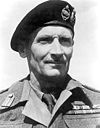
Field Marshal 1st Viscount of El Alamein, Knight of the Garter. Served as CIGS, and deputy leader of NATO. A veteran of World War I and the Irish War of Independence, entered the Second World War as a divisional commander within the British Expeditionary Force, defending France and then took command of II Corps during the evacuation at Dunkirk. After several Corps appointments was placed in command of South-Eastern Command before being dispatched to Egypt to take command of the Eight Army, following the death of William Gott. Won the Second Battle of El Alamein and played a crucial role in the completion of the North African Campaign. Then led the Eighth Army during the Battle of Sicily and then the invasion of Italy itself. Was transferred back to the United Kingdom to take command of the 21st Army Group and led all Allied ground forces during Operation Overlord. Following the conclusion of this campaign, relinquishing the role of Ground Forces commander, he continued to lead 21st Army Group throughout the rest of the 1944-1945 North West Europe Campaign.[1][2] Harold Alexander 
Field Marshal 1st Earl of Tunis. Governor General of Canada. - Battle of Dunkirk
- North African Campaign
- Battle of Tunisia
- Allied invasion of Italy
The last British soldier to evacuate Dunkirk, replaced Auchinleck from command at North Africa, and turned the tide in the allies favour. Defeated the Germans in North Africa. Staged a successful invasion of Italy, and as Commander in Chief of Allied Forces liberated it in 1944 before becoming Supreme Commander of the Allied Forces Headquarters, responsible for all military operations in the Mediterranean Theatre.[1] Archibald Wavell 
Field Marshal 1st Earl Wavell Viceroy of India, returned to England in 1947 and became High Steward of Colchester. Commander-in-Chief of British Forces in the Middle East 1939–1941. Commander-in-Chief in India 1941–1942. Commander of ABDACOM 1942. Commander-in-Chief in India 1942–1943. Viceroy of India 1943-1947.[1] Viscount Gort 
Field Marshal John Vereker, 6th Viscount Gort. Holder of the Victoria Cross (World War I). Died in 1946. A world war I hero, he played a major role in mobilising and arming the British forces during the Phony War. He took command of the British Expeditionary Force for the German invasion of France, and despite courageous fighting, was overwhelmed by German military tactics. When his troops were trapped in Dunkirk, he disobeyed orders from French and British command to attack and decided to evacuate, a decision which saved the lives of over 300,000 soldiers.[1] Claude Auchinleck 
General Order of the Bath Commander-in-Chief, India Organised the Home Guard to protect against Operation Sea Lion. A quick response to the Iraq revolt impressed Churchill, who appointed him Commander-in-Chief of the North Africa forces. Frequent disagreements with British command, coupled with significant loss of territory against Rommel, forced him to be reassigned back to India. He fared better in this theatre, successfully mobilising Indian forces against the Burma invasion.[1] Air Force Charles Portal 
Marshal of the Royal Air Force Distinguished Flying Cross,[3] 1st Viscount Portal of Hungerford. Chairman of British Aircraft Corporation.[3] Strong advocate of area bombing. Took over as head of the RAF after the Battle of Britain. Continually launched air raids against Germany, especially targeting civilian populations.[1] Arthur Harris 
Air Chief Marshal 1st Baronet of Chipping Wycombe Manager of the South African Marine Corporation Assisted Charles Portal in the strategic bombing campaign against Germany. Hugh Dowding 
Air Chief Marshal 1st Baron Dowding of Bentley Priory Dismissed as head of fighter command in November 1940. Became a theosophist after the war. Died in February 1970, aged 87 and buried in Westminster Abbey. Leader in World War I of an RFC Squadron. Commander of the Battle of Britain. Deservedly credited with saving Britain from defeat. Navy Louis Mountbatten 
Admiral of the Fleet 1st Earl Mountbatten of Burma
Knight of the GarterViceroy of India until 1947. First Sea Lord from 1954 to 1957. - Battle of Dieppe
- Pacific Theatre of World War II
Supreme Allied Commander of SEAC. Under him were such famous generals as William Slim and Joseph Stilwell.[1] Dudley Pound 
Admiral of the Fleet Knight of the British Empire Died of illness, October 1943. - Battle of Atlantic
First Sea Lord 1939-1943.[1] Andrew Cunningham 
Admiral of the Fleet Distinguished Service Order, 1st Viscount of Hyndhope Served as Lord High Commissioner to the General Assembly of the Church of Scotland. Died in June 1963, buried at sea off Portsmouth. First Sea Lord 1943-1946.[1] France
Armed Force Name Highest Rank Highest Award Fate Casualties inflicted Theatres / Battles Army Charles de Gaulle 
Général de Brigade Grand Master Legion of Honor Took control of France as President and was instrumental in creating the Fifth French Republic. Defied Vichy France by vowing to continue fighting after the French surrender. He headed with de Tassigny the Free French Forces, who assisted the Allies in the liberation of France in 1944.[1] Jean de Lattre de Tassigny 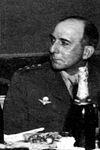
Marshal of France Grand Master Legion of Honor Later commanded French troops in the First Indochina War. Defied Vichy France by vowing to continue fighting after the French surrender. He headed with Charles de Gaulle the Free French Forces, who assisted the Allies in the liberation of France in 1944.[1] Maurice Gamelin Général d'Armée Died in 1958. Commander-in-Chief of French army during Battle of France, was replaced in 20 May 1940.[1] Maxime Weygand General Arrested on charges of treason but acquitted. Commander-in-Chief of French army during the Battle of France from 20 May 1940 until the surrender of France. Oversaw the creation of the Weygand line, an early application of the Hedgehog tactic.[1] French Navy François Darlan Admiral of the Fleet Murdered by Bonnier de La Chapelle December 1942. Built up the French Navy to prepare for war, only to see it destroyed by the British Navy. Served the Vichy France government and was tipped to become Pétain's successor. Was commander of Vichy French forces in Operation Torch. After arranging a ceasefire, he defected to the Allied side.[1] United States
Armed Force Name Highest Rank Highest Award Fate Casualties inflicted Theatres / Battles Army George Marshall 
General of the Army Distinguished Service Medal, Silver Star, GCB As Secretary of State his name was given to the Marshall Plan, for which he was awarded the Nobel Peace Prize in 1953. Was the aide to General Pershing during World War I. Was Chief of Staff having overall command of the US Army during and before World War II. Marshall served as the U.S. Army Chief of Staff during the war and as the chief military adviser to President Franklin D. Roosevelt. Many of the American generals that were given top commands during the war were either picked or recommended by Marshall, including Dwight Eisenhower, Lloyd Fredendall, Leslie McNair, Mark W. Clark and Omar Bradley.[4] He led the rapid growth of US forces, co-ordinated the Western Allies and promoted postwar reconstruction of Europe.[1] Dwight D. Eisenhower 
General of the Army Distinguished Service Medal, Medal of Honor (offered, but not accepted by him). After liberating Europe, served as NATO head before being elected the 34th President of the United States. - Operation Torch
- Battle of Sicily
- Battle of Italy
- Battle of Normandy
- Western Front (World War II)
Entered the war as an assistant to the more senior Officers MacArthur and George Patton, showed his worth as a commander during the North Africa Campaign, before being chosen by Roosevelt to head the liberation of Europe on the Western Front as commander of SHAEF.[1] Douglas MacArthur 
General of the Army Medal of Honor, Philippine Medal of Valor Tasked with rebuilding Japan after the war. Later involved in the Korean War. - Battle of the Philippines
- Southwest Pacific Area
- Battle of Leyte
- Battle of Leyte Gulf
Recalled from retirement prior to the start of the Pacific war. Early on in World War II, received the Medal of Honor for extreme bravery. Was disappointed to relinquish the Philippines to the Japanese. Promising to return, he did so in 1945 and whilst in Manila, prepared for war in Japan itself. MacArthur presided over the Japanese Unconditional Surrender in 1945. His strategy of maneuver, air strikes and force avoidance meant that soldiers under his command faced relatively low casualties. Omar Bradley 
General of the Army Distinguished Service Medal (Army and Navy). Became Chairman of the Joint Chiefs of Staff - Battle of Sicily
- Battle of Normandy
- Western Front (World War II)
This former infantry school instructor entered the war under Patton, later becoming his boss. Towards the end of the war, led a force of over 1.3 million troops (America's largest to serve under one man).[1] Mark W. Clark 
General Distinguished Service Medal (Army and Navy). Became head of the Citadel - Battle of Sicily
- Battle of Anzio
- Battle of Italy
- Battle of Cassino
Led the triumphal entry into Rome. Served under General Alexander. Ordered the destruction of the religious abbey at Monte Cassino. Was Commander in Chief in Italy from late 1944.[1] George S. Patton, Jr. 
General Distinguished Service Cross Died in a road accident 4 months after the end of the war. An aggressive general whose ferocious military thrusts earned him admiration and respect from all participants in the war (and at times endangered his military career). Successfully used the German tactic of armored blitzkrieg against the Germans.[1] Navy Ernest King 
Fleet Admiral Navy Cross Retired on December 15, 1945. - Battle of Atlantic
[1] United States Chief of Naval Operations. Chester W. Nimitz 
Fleet Admiral Distinguished Service Medal Served as Chief of Naval Operations. After the attack on Pearl Harbor, took command of the Pacific Ocean areas, and turned around USA's fortunes in the Battle of Midway. Closed the war with operations in the Leyte Gulf and Okinawa.[1] William Halsey, Jr. 
Fleet Admiral Navy Cross Retired 1947. Commander of South Pacific Area 1942-1944. Commander of United States Third Fleet 1944-1945.[1][5] Frank Jack Fletcher 
Admiral Navy Cross Chairman of the General Board, retired in 1947. - Battle of Coral Sea
- Battle of Midway
- Battle of the Eastern Solomons
Recipient of the Medal of Honor for saving hundreds of refugees during the United States occupation of Veracruz in April 1914 during the Mexican Revolution. Operational commander at the pivotal Battles of Coral Sea and of Midway; nephew of Admiral Frank Friday Fletcher. In November 1942, he became Commander, Thirteenth Naval District and Commander, Northwestern Sea Frontier. A year later, he was placed in charge of the Northern Pacific area [according to Oxford companion to second world war, this occurred in October 1942].[1]
Raymond A. Spruance 
Admiral Navy Cross Served as President of the Naval War College. Commander of two of the most significant battles of the war, Battle of Midway and the Battle of the Philippine Sea. Air Force Henry Arnold 
General of the Air Force Distinguished Service Cross Head of the USAAF[1] Member of the US Joint Chiefs of Staff, and the Combined Chiefs of Staff committees.[1] Ira C. Eaker 
Lieutenant General Legion of Merit, Distinguished Service Medal (Army, Navy and Air Force) Became deputy commander of the Army Air Forces until retirement in 1947. - North African Campaign
- Schweinfurt-Regensburg mission
Commander of the 8th US Bomber command.[1] Carl Spaatz 
General Distinguished Service Cross Replaced Arnold in September 1947 to become chief of the US Air Force. - North African Campaign (Air support)
- Normandy campaign (Air support)
One of the pioneers of US military aviation, Spaatz advocated the use of scientific analysis to bombing raids, and made effective use of long range fighters, tactics which helped the Allies achieve air superiority over Europe.[1] Soviet Union
Armed Force Name Highest Rank Highest Award Fate Casualties inflicted Theatres / Battles Army Georgy Zhukov 
Marshal of the Soviet Union Twice an Order of Victory, four times Hero of the Soviet Union Became Soviet member of the Allied Control Council for Germany. Involved in nearly every major battle on the Eastern Front. He successfully led the defense of Moscow and later relieved Leningrad. After vying with Rokossovsky for overall command, he led all Soviet armies in the closing stages of the war and at the Battle for Berlin.[1] Konstantin Rokossovsky 
Marshal of the Soviet Union, Marshal of Poland Order of Victory, twice Hero of the Soviet Union. Polish Defense Minister - Battle of Moscow
- Battle of Stalingrad
- Battle of Kursk
- Battle of the Lower Dnieper
- Eastern Front
Decisive role in the Battle for Moscow, led encirclement forces at Stalingrad, broke German counter-attack at Kursk, advanced into Poland and eventually linked up with the Americans at Wismar.[1] Aleksandr Vasilevsky 
Marshal of the Soviet Union Twice an Order of Victory, twice Hero of the Soviet Union. Soviet Defence Minister - Battle of Moscow
- Second Battle of Kharkov
- Battle of Stalingrad - Operation Uranus
- Battle of the Lower Dnieper
- Operation Bagration
- Manchurian Strategic Offensive Operation
- Eastern Front
Stalin's strategic specialist who planned and carried through many successful Soviet operations as overall commander, particularly the encirclement at Stalingrad and the grand plan for Bagration. Commander-in-Chief of Soviet Forces in the Far East during Manchurian Strategic Offensive Operation.[1] Boris Shaposhnikov 
Marshal of the Soviet Union Commandant of the Voroshilov Military Academy. Died in 1945. Chief of the General Staff 1937-1940, 1941-1942. Organized pre-war build up of the Red Army. Nikolai Vatutin 
General of the Army Hero of the Soviet Union Killed by the Ukrainian Insurgent Army. Deputy of the Chief of the General Staff of the Red Army. Decisive Soviet commander at Kursk, outmanoeuvered German commander Manstein and later routed German forces in Korsun salient.[1][additional citation needed] Ivan Konev 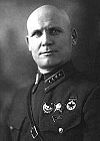
Marshal of the Soviet Union Order of Victory, Hero of the Soviet Union Appointed head of the Soviet forces in East Germany. - Kalinin Front
- Battle of Kursk
- Belgorod
- Odessa
- Kharkov
- Kiev
- Vistula-Oder Offensive
[1] Semyon Timoshenko 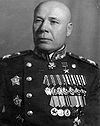
Marshal of the Soviet Union Order of Victory, twice a Hero of the Soviet Union. Soviet Army commander in Belarus Soviet Navy Ivan Isakov Admiral of the Fleet of the Soviet Union Hero of the Soviet Union Commander-in-Chief of the Naval Forces. - Barbarossa (Soviet naval defence)
- Battle of the Caucasus
- Eastern Front
Soviet Aviation Alexander Novikov 
Chief Marshal of Aviation of the Soviet Union Two times Hero of the Soviet Union Commander-in-Chief of the Air Forces of the Soviet Union
Chief of the High school of civil aviation- Barbarossa (Soviet air forces)
- Eastern Front
Republic of China
Armed Force Name Highest Rank Highest Award Fate Casualties inflicted Theatres / Battles Army Chiang Kai-shek 
Generalissimo After the war against Japan, resumed civil war against the communists. Retreated to Taiwan and led the Kuomintang (KMT) government there until his death. Was both the head of the Republic of China and the supreme Allied commander in the China Theatre. Led the nation to total war from his temporary capital at Chongqing. Mao Zedong 
Head of the Communist Party of China Defeated the Kuomintang in the civil war and established the People's Republic of China. - Organized Guerrilla resistance in Japanese-held territories
Greatly expanded communist base areas during the war, and eventually usurped control of China from Kuomintang.[1] Yan Xishan 
General Fought on the side of the Republic of China in the civil war. Warlord of Shanxi Chen Cheng 
General Became the Chief of the general staff Zhu De 
General Became the commander-in-chief of the People's Liberation Army. Military leader of the Communist Eighth Route Army. Xue Yue 
General Fought on the side of the Republic of China in the civil war. Australia
Armed Force Name Highest Rank
held during World War IIHighest Award Fate Casualties inflicted Theatres / Battles Army Brudenell White 
General Knight Commander of the Order of the Bath Killed in the Canberra air disaster, 1940. Chief of the General Staff (March–August 1940) Thomas Blamey 
General Knight Grand Cross of the Order of the British Empire Promoted to Field Marshal in 1950. Became an author and promoted welfare of ex-servicemen. - Battle of Greece
- Pacific Theater
- Battle of the Philippines
- Guadalcanal Campaign
- Solomon Islands campaign
- New Guinea campaign
- Battle of Timor
- Philippines campaign
- Borneo campaign
Commander in Chief of Australian Armed Forces and Commander in Chief of Allied Land Forces in the South West Pacific Area. Edmund Herring 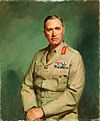
Lieutenant General Knight Commander of the Order of the British Empire Later Chief Justice of Australia. Received KCMG in 1949 Commander of Australian forces in the Kokoda Track campaign. Leslie Morshead 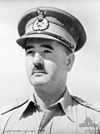
Lieutenant General Knight Commander of the Order of the Bath Became General Manager of the Orient Steam Navigation Company. Led the famous Australia defence against Rommel's siege of Tobruk. Commander at the Battle of El Alamein. Australia forces took 22 percent of the casualties there. After learning the art of jungle warfare, was a very competent commander of operations against the Japanese in New Guinea. Air Force Charles Burnett 
Air Chief Marshal Knight Commander of the Order of the Bath RAF officer loaned to Australia and served as Chief of the Air Staff from 1940 to 1942. Oversaw a 20-fold increase in the size of the RAAF which supported the Empire Air Training Scheme. Returned to Great Britain in 1942 and while suffering poor health worked in the RAF's cadet organisation, the Air Training Corps. Died of a coronary thrombosis months before the end of the War. Fighter ace during the First World War. Deputy Commander of RAF in the Middle East. Air Force Peter Roy Maxwell Drummond 
Air Marshal Knight Commander of the Order of the Bath Died in an air crash at sea, 1945. Fighter ace during the First World War. Deputy Commander of RAF in the Middle East. Navy John Gregory Crace 
Vice Admiral Knight Commander of the Order of the British Empire Commanded Chatham Dockyard in Britain. Commanded the Australian navy in the Battle of the Coral Sea. Commander of the Allied Naval Squadron, ANZAC Force. New Zealand
Armed Force Name Highest Rank
held during World War IIHighest Award Fate Casualties inflicted Theatres / Battles Army Bernard Freyberg, 1st Baron Freyberg 
Lieutenant General Knight Grand Cross of the Order of St Michael and St George, Distinguished Service Order
Holder of the Victoria Cross plus three other Distinguished Service Orders (World War I)Returned to New Zealand. - Battle of Greece
- Battle of Crete
- Battle of El Alamein
- Battle of Cassino
A veteran of the Mexican Revolution and Victoria Cross recipient during the First World War. First soldier on beach for the Battle of Gallipoli during the First World War and the youngest general in the British Army during the First World War.[6] He liked to be in the thick of action—Churchill called him "the Salamander" due to his love of fire. Involved in the disastrous defeat in the Battle of Greece. Again defeated as the Allied Commander in the Battle of Crete. Very successful as a Commander in various campaigns in the North African Campaign, including the Battle of El Alamein. Defeated again at the Battle of Cassino as a Corps Commander. Relieved Padua and Venice, and was first to enter Trieste in the race for Trieste, and successfully confronted Josip Broz Tito's Partisans there. By the end of World War II, Freyberg had spent ten and a half long years fighting the Germans.[7] Air Force Arthur Coningham 
Air Marshal Knight Commander of the Order of the Bath Missing in Bermuda Triangle. A high scoring air ace in World War I. Air force Commander working with famous Major General George Patton during Operation Torch. Commander of tactical Air Forces for Operation Husky and D-Day. Keith Park 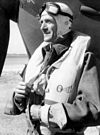
Air Chief Marshal Knight Grand Cross of the Order of the Bath Returned to New Zealand - Battle of France
- Battle of Britain
- Battle of Malta
- Pacific Theatre of Operations
A veteran of World War I and air ace. Served under Hugh Dowding and commanded the defense of London during the Luftwaffe attacks. Dowding and Park are credited with winning the Battle of Britain. Led the defense of Malta. Roderick Carr 
Air Marshal Knight Commander of the Order of the British Empire Air Officer Commanding Indian Air Force, 1946 Served in the Royal Naval Air Service during the First World War. Commander of Northern Ireland RAF. Bomber Command Commander 4 Group. Deputy Chief of Staff (Air), SHAEF. Poland
Armed Force Name Highest Rank Highest Award Fate Casualties inflicted Theatres / Battles Army Edward Rydz-Śmigły 
Marshal of Poland Order of the White Eagle Suffered heart attack before he could participate in the Polish resistance. Was commander-in-chief of Poland during its invasion by German and Russian troops.[1] Władysław Sikorski 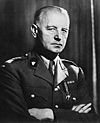
General Order of the White Eagle Died in plane crash July 1943. Served as Commander-in-Chief of the Polish government in exile, and formed the Polish Armed Forces.[1] Władysław Anders 
General Order Virtuti Militari Became Inspector-General of the Polish Armed Forces in Exile. Founder & commander of the Polish Forces Armed in Iran (1942), better known as Anders Army.[1] Michał Rola-Żymierski Marshal of Poland Order of the White Eagle He was a member of the Polish United Workers Party Was commander-in-chief of the Polish Army fighting alongside the Soviet Union.[1] Tadeusz Bór-Komorowski 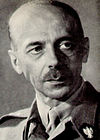
Lieutenant General Order of the White Eagle Elected Prime Minister of Polish government in Exile. Commanded the main part of the Warsaw Uprising.[1] Czechoslovakia
Armed Force Name Highest Rank Highest Award Fate Casualties inflicted Theatres / Battles Army Ludvík Svoboda General People's Hero of Yugoslavia, Hero of the Soviet Union Later president of the Czechoslovak Socialist Republic. Commander of the Czechoslovak military units on the Eastern front Ján Golian Brigadier General Czechoslovak War Cross Executed by the Germans in a concentration camp in Flossenburg. Led the insurgent Slovak Army during the Slovak National Uprising. Greece
Armed Force Name Highest Rank Highest Award Fate Casualties inflicted Theatres / Battles Army Alexander Papagos Lieutenant General Deported to Dachau Concentration Camp, led Greek army in Greek Civil War, later Field Marshal and Prime Minister of Greece. Commander-in-Chief of the Greek Army in 1940-41.[1] Aris Velouchiotis Corporal Committed suicide after the Second World War. Founder and chief leader of the Greek People's Liberation Army. Stefanos Sarafis Colonel Later MP for the United Democratic Left, died in a car accident in 1957. Military leader of the Greek People's Liberation Army after April 1943. Napoleon Zervas Colonel Twice minister, died in 1957. Commander of the National Republican Greek League resistance army. Navy Alexandros Sakellariou Vice Admiral MP, Navy and National Defense Minister after the war. Died in 1982. - Greco-Italian War
- Mediterranean Theatre
Chief of staff of the Royal Hellenic Navy 1940-41, Navy Minister in exile, 1941–44 Netherlands
Armed Force Name Highest Rank Highest Award Fate Casualties inflicted Theatres / Battles Army Henri Winkelman General Order of William Died in 1952. Was Commander-in-Chief of the Netherlands army during the Battle of the Netherlands.[1] Hein ter Poorten 
Lieutenant General Died in 1968. - Netherlands East Indies campaign
- Battle of Java (1942)
Commander of the ABDA land forces in early 1942. Navy Conrad Helfrich 
Vice admiral Died in 1962. - Netherlands East Indies campaign
Commander of the ABDA Naval forces in 1942. Karel Doorman Rear admiral Died in Battle of the Java Sea. - Netherlands East Indies campaign
Commander of the combined American, British, Dutch and Australian (ABDA) fleet in the Dutch East Indies.[1] Yugoslavia
Armed Force Name Highest Rank Highest Award Fate Casualties inflicted Theatres / Battles Army Josip Broz Tito 
Marshal of Yugoslavia Order of the National Hero Became President of Yugoslavia - People's Liberation War
Led the People's Liberation Army.[1] Draža Mihailović General Legion of Merit Executed by the Communist regime in 1946. - Yugoslav Front (World War II)
Commander of the Yugoslav Army in the Fatherland. Canada
Armed Force Name Highest Rank Highest Award Fate Casualties inflicted Theatres / Battles Army Harry Crerar 
General Venerable Order of Saint John Became a diplomat De facto commander-in-chief of the Canadian military.[1] Guy Simonds 
Lieutenant General Order of the Bath Chief of the General Staff Devised the Kangaroo armoured personnel carrier.[1] Andrew McNaughton 
Lieutenant General Order of the Companions of Honour First President of the United Nations Security Council A noteworthy scientist and inventor of a direction finding device for artillery, a precursor to Radar. Fought in Vimy Ridge during World War I and was a Lieutenant Colonel. Commander of the Canadian troops until 1943. Was defeated in the Dieppe Raid. Opposed the breaking up of the Canadian Army, and insisted it fight as a single unit. Grandfather of Lieutenant-General Andrew Leslie of Canada.[1] South Africa
Armed Force Name Highest Rank Highest Award Fate Casualties inflicted Theatres / Battles Army Jan Smuts 
Field Marshal Légion d'honneur Croix de Commandeur Helped drafting of the United Nations Charter, died 11 September 1950 - Imperial War Cabinet
Smuts signed the Paris Peace Treaty, resolving the peace in Europe, thus becoming the only signatory of both the treaty ending the First World War, and that ending the Second.[1] Axis Powers
Germany
Armed Force Name Highest Rank Highest Award Fate Casualties inflicted Theatres / Battles Army Wilhelm Keitel 
Field Marshal Executed in 1946. Chief of the OKW during World War II.[1] Alfred Jodl 
Colonel General Executed in 1946. Chief of the Operations Staff of the OKW.[1] Heinrich Himmler 
Reichfuhrer-SS Suicide 1945. Chief of the SS during World War II.[1] Walther von Brauchitsch 
Field Marshal Died in 1948. Commander-in-Chief of Heeres 1938-1941. Paul Ludwig Ewald von Kleist Field Marshal Died in 1954 in a Soviet prison. Most senior German officer to die in a Soviet prison. - German Invasion of Poland
- Battle of France
- Operation Barbarossa
An aristocrat and senior commander in World War I. Commander of tank armies in the German Army in World War II. Fought in most of the actions involving blitzkrieg techniques. Wilhelm Ritter von Leeb 
Field Marshal Died in 1948. Exemplary service in World War I. Given the command of Army Group North in Operation Barbarossa. Was in charge of the unsuccessful siege of Leningrad, which lasted nearly 1000 days. Gerd von Rundstedt 
Field Marshal Knight's Cross of the Iron Cross with Oakleaves and Swords[8] Died in 1953. A Kriegsakademie graduate of the Prussian nobility, and a major World War I veteran, Rundstedt distinguished himself as commander of numerous fronts of World War II including the Western and Eastern fronts of Europe.[1] Günther von Kluge 
Field Marshal Committed suicide in 1944. - German Invasion of Poland
- Operation Barbarossa
- Battle of France
- Falaise Gap
Commander of many successful operations including the invasion of Poland, France and the Soviet Union. Involved in the failed Hitler assassination, he deicded to commit suicide.[1] Georg von Küchler 
Field Marshal Arrested in 1948 and sent to the Soviet Union by the Americans. Released in 1953. Relieved von Leeb as commander of the siege of Leningard. After this failed, withdrew Army Group North, which saved them.[1] Fedor von Bock 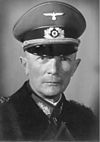
Field Marshal Was killed in bombing raid in 1945. - Invasion of Poland
- Battle of France
- Battle of the Netherlands
- Operation Barbarossa
- Battle of Białystok-Minsk
- Battle of Moscow
- Second Battle of Kharkov
Recipient of the Pour le Mérite from World War I, rose rapidly in rank to Field Marshal by the fall of France. Took command of Army Group Centre, whose Panzer groups penetrated the furthest into Russia.[1] Erich von Manstein 
Field Marshal Knight's Cross of the Iron Cross with Oakleaves and Swords[8] Imprisoned after war, later released and served as senior advisor to the Bundeswehr. - Invasion of Poland
- Battle of France
- Operation Barbarossa
- Battle of Sevastopol
- Battle of Stalingrad
- Third Battle of Kharkov
- Battle of Kursk
- Battle of the Dnieper
The master of mobile battle, authored the original Sichelschnitt plan, a plan which enabled Germany to capture France with minimal casualties.[1] Erwin Rommel 
Field Marshal Knight's Cross of the Iron Cross with Oakleaves, Swords and Diamonds[8] Committed suicide in 1944. A legend in his own time, The Desert Fox headed the German campaign of North Africa. Rommel was highly decorated in World War I with the Pour le Mérite, Germany's highest award. During World War II, he made an immediate impact in the Saharan desert, conquering all of West Africa and threatening to reach Suez. A number of factors such as stretching supply lines and the reinforcement of Allied military power (both in Morroco and Egypt) turned the tide in the favour of the Allies, and his forces were routed in the Battle of Tunisia in 1943. Before he could counterattack, German high command reassigned him to defend the Atlantic Wall. Rommel failed to stop the allied invasion of Normandy. Though typically linked to the assassination of Hitler, Rommel probably did not take part in the July 20 plot as he did not want future generations to think that the Axis lost the war due to backstabbing. Nevertheless, Rommel had to commit suicide, lest he face a mock-trial which would have surely ended in the death of him, his family and his aides.[1] Walter Model 
Field Marshal Knight's Cross of the Iron Cross with Oakleaves, Swords and Diamonds[8] Committed suicide in 1945. German Army officer whose expertise in defensive warfare earned him the nickname of the 'Führer's fireman'[1] Heinz Guderian 
Colonel General Knight's Cross of the Iron Cross with Oak Leaves[8] Died in 1954. Main creator of Blitzkrieg tactics. Chief of OKH General Staff 1944-1945.[1] Friedrich Paulus 
Field Marshal Soviet captivity until 1953. Became a vocal critic of the Nazi regime. - Invasion of Poland (1939)
- Fall of France (1940)
- Operation Barbarossa (1941)
- Operation Blue (1942)
- Operation Fridericus (1942)
- Battle of Stalingrad (1942–1943)
Commander of the disastrous campaign in the Battle of Stalingrad. Josef Dietrich 
Colonel General Sentenced to life, reduced to 25 years imprisonment in 1946. Promoted welfare of ex-servicemen on release. Before World War II, Dietrich was very close to Hitler, and played a part in the Night of the Long Knives. Later in World War II he was a veteran of many hard battles on the Eastern Front and in France. Dietrich came into prominence for his role in the Battle of the Bulge in late 1944. He later commanded the defense of Vienna. He was a widely respected person in Germany both during and after the war.[1] Air force Hermann Göring 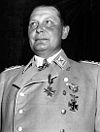
Reichsmarschall Grand Cross of the Iron Cross[8] Committed suicide after being sentenced to death for war crimes. Was a high scoring air ace and took over the Red Baron's famous squadron, and won the prestigious Pour le Mérite in World War I. Hitler's second in charge. Commander-in-Chief of Luftwaffe 1935-1945. During World War II, he did not live up to his prior high standards. He was involved with the running of Germany and the war, and the central decision making, including implementation of the Holocaust.[1] Albert Kesselring 
Field Marshal Knight's Cross of the Iron Cross with Oakleaves, Swords and Diamonds[8] Died in 1960 at the age of 75. Was Commander in Chief of Luftwaffe South (1941–1943), then South-west (1943–1945), then West Europe (1945). Was a very competent commander as chief of the defense of Italy against the allies, when he caused plenty of problems, even though heavily outnumbered, including at the prolonged battles of Anzio and Monte Cassino. Was a leader in the defense of Germany at the end of the war. Kesselring was widely admired and acknowledged on both sides as a "fair fighter" and was responsible for protecting priceless artworks and even the City of Rome from destruction.[1] Wolfram Freiherr von Richthofen 
Field Marshal Knight's Cross of the Iron Cross with Oak Leaves[8] Died in 1945. Robert Ritter von Greim 
Field Marshal Knight's Cross of the Iron Cross with Oakleaves, Swords and Diamonds[8] Committed suicide in 1945. An ace of World War I and winner of the prestigious Pour Le Merite award. Before World War II, went to China to help build their air force. A commander of the Luftwaffe during the Battle of Poland. He was loyal to Hitler to the end, flying in on the 26th April, 1945 with Hanna Reitsch. He and Hanna Reitsch said "It was the blackest day when we could not die at our Führer's side.".[1] Kurt Student 
Colonel General Knight's Cross of the Iron Cross with Oakleaves[8] Held as a Prisoner of War by the British and freed in 1948. An ace of World War I. Before World War II, trained troops in airborne operations. Commanded the successful airborne operations in the Battle of Crete. Commanded the highly successful operation to free Benito Mussolini. Successful again in the defense against airborne landings near Arnhem.[1] Navy Erich Raeder 
Grand Admiral Knight's Cross of the Iron Cross Died in 1960. - Oberkommando der Marine
- Operation Weserübung
- Battle of the Atlantic
Commander-in-Chief of Kriegsmarine 1936-1943.[1] Karl Dönitz 
Grand Admiral Knight's Cross of the Iron Cross with Oak Leaves[8] Briefly became President of Germany. Spent 10 years in prison. Died in 1980. - Oberkommando der Marine
- Battle of the Atlantic
Commander-in-Chief of Kriegsmarine 1943-1945.[1] Italy
Armed Force Name Highest Rank Highest Award Fate Casualties inflicted Theatres / Battles Army Pietro Badoglio 
Marshal of Italy Duke of Addis Abeba Succeeded Mussolini and arranged an Armistice of his country with the Allies. Was not in favour of Italy's alliance to Germany, and resigned after the Battle of Greece.[1] Ugo Cavallero Marshal of Italy Committed suicide after alienating both Germany and non-fascist Italy. Chief of the Italian Supreme Command 1940-1943.[1] Giovanni Messe 
Marshal of Italy Became a member of the Italian Senate. Navy Arturo Riccardi Admiral Removed from office by Badoglio Served as Chief of staff of the Italian Navy. Japan
Armed Force Name Highest Rank Highest Award Fate Casualties inflicted Theatres / Battles Army Hideki Tōjō 
General Executed in 1948. Prime minister of Japan 1941-1944 was also a military commander. Chief of the Army General Staff in 1944.[1] Hajime Sugiyama 
Field Marshal Committed suicide shortly after the end of the war. Chief of the Army General Staff 1940-1944.[1] Kotohito Kan'in 
Field Marshal Died in 1945 Chief of staff of the Army, 1931–1940 Hisaichi Terauchi 
Field Marshal Order of the Rising Sun Died in a prisoner of war camp in Malaya June 1946. - North China Area Army
- Southern Expeditionary Army Group
Son of former PM Terauchi Masatake, became the senior officer of the Imperial Japanese after the coup of 1936. Was at one time considered as Tojo successor after the latter's resignation. Shunroku Hata 
Field Marshal Sentenced to imprisonment. - Battle of Wuhan
- Battle of Henan-Hunan-Guangxi
Tomoyuki Yamashita 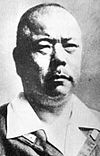
General Executed at 1946. Forced the surrender of the allies in the Battle of Singapore. Defender of the Philippines against MacArthur.[1] Iwane Matsui[citation needed] 
General Retired 1938, executed in 1948. - Battle of Shanghai
- Battle of Nanjing
Navy Osami Nagano 
Fleet Admiral Died of a heart attack in 1947. Chief of the Navy General Staff, 1941-1944. Hiroyasu Fushimi 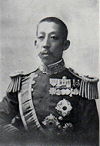
Fleet Admiral Died in 1946. Chief of staff of the Navy, 1932-1941. Isoroku Yamamoto 
Fleet Admiral Order of the Chrysanthemum The plane carrying him was shot down in 1943. Commander of the Dec. 7, 1941 attack on Pearl Harbor, Hawaii. Commander-in-Chief of the Imperial Japanese Navy 1939-1943.[1] Mineichi Koga 
Fleet Admiral Knight's Cross of the Iron Cross with Oak Leaves[8] Killed in plane crash 1944. Commander-in-Chief of the Imperial Japanese Navy 1943-1944.[1] Soemu Toyoda Admiral Died in 1957 at the age of 73. Commander-in-Chief of the Imperial Japanese Navy 1944-1945, Chief of staff of the Navy 1945.[1] Chūichi Nagumo 
Admiral Order of the Rising Sun Committed suicide in 1944 during the battle of Saipan. Torpedo specialist and commander of the Carrier Striking Task Force that attacked Pearl Harbor. Successful raids at Darwin and the Indian Ocean were reversed at the Battle of Midway. Although he had tactical victories in the Guadalcanal campaigns, his battle strength was severely depleted, and was switched to the defence of the Mariana Islands.[1] Jisaburō Ozawa 
Vice Admiral Died in 1966. Replaced Toyoda in 1945 to become Commander in Chief of the Japanese Combined Fleet[1] Thailand
Armed Force Name Highest Rank Highest Award Fate Casualties inflicted Theatres / Battles Army Plaek Pibulsonggram Field Marshal Later ousted after the defeat of the Japanese, only to return to power in 1948 and become Prime Minister until 1957. - French-Thai War
- Pacific War
Prime Minister and dictator of Thailand during the war, eventually commanding Thai forces during the French-Thai War. Sarit Thanarat 
Brigadier Commander of Lampang army during the Pacific War. Finland
Armed Force Name Highest Rank Highest Award Fate Casualties inflicted Theatres / Battles Army Carl Gustaf Emil Mannerheim 
Marshal of Finland Mannerheim Cross Succeeded Risto Ryti as President of Finland Was Commander-in-Chief of Finnish army during World War II. Organised the Mannerheim Line in the Karelian Peninsula.[1] Karl Lennart Oesch 
Lieutenant General Mannerheim Cross Died in 1978 - Fourth strategic offensive
- Battle of Tali-Ihantala
Was one of the most important Finnish generals. Two-thirds of the Finnish ground forces were under his command at the end of the Continuation War. Romania
Armed Force Name Highest Rank Highest Award Fate Casualties inflicted Theatres / Battles Army Ion Antonescu 
Marshal of Romania Executed in 1946. Took control of Romania when Carol II abdicated, and established a fascist dictatorship with the Iron Guard Party. Acted as Commander-in-Chief of the Romanian Army and Conducător of Romania, recapturing Bessarabia and northern Bucovina, then appointed himself marshal. When his forces were decimated at Stalingrad, he started negotiating for peace. His career ended in 1944 when he was arrested by King Michael, who signed an armistice with the Allies.[1] Petre Dumitrescu General Knight's Cross of the Iron Cross with Oak Leaves Died in 1950 after a bought with cancer. Slovakia
Armed Force Name Highest Rank Highest Award Fate Casualties inflicted Theatres / Battles Army Ferdinand Čatloš Major General Was briefly imprisoned, set free in 1948, died in 1972. Slovakian Minister of Defence and Chief General Staff. Azad Hind
Armed Force Name Highest Rank Highest Award Fate Casualties inflicted Theatres / Battles Army Subhas Chandra Bose 
Supreme Commander of the Indian National Army Died under mysterious circumstances. Led the Indian National Army. Mohan Singh Deb General Became a member of the Rajya Sabha. First commander-in-chief of the Indian National Army. Shah Nawaz Khan Major Became a member of the Lok Sabha. Led the 1st Guerrilla Detachment of the INA. Lakshmi Sahgal Captain Became a prominent leftist politician. Commander of the all-female Rani of Jhansi regiment. Others
Burma
Armed Force Name Highest Rank Highest Award Fate Casualties inflicted Theatres / Battles Army Aung San Major General Arranged for the establishment of Burmese independence, assassinated under mysterious causes in 1947. Led the Burma National Army and the Anti-Fascist Organisation. Switzerland
Armed Force Name Highest Rank Highest Award Fate Casualties inflicted Theatres / Battles Army Henri Guisan 
General Retired in Switzerland feeling his mission was fulfilled. Special war time four star General of Swiss Armed Forces. His successor immediately following the war was General Andrew teDuits He made it very clear that Switzerland would resist any Nazi invasion. If they ran out of bullets they were to resort to the bayonet. He said that Switzerland would defend itself against any invader and would never surrender. Indeed, Swiss citizens had been instructed to regard any surrender broadcast as enemy lies and resist to the end. Ukraine
Armed Force Name Highest Rank Highest Award Fate Casualties inflicted Theatres / Battles Army Roman Shukhevych 
General Gold Cross of Combat Merit, First Class Died fighting NKVD forces in Lviv in 1950. Supreme commander of the Ukrainian Insurgent Army. See also
References
- ^ a b c d e f g h i j k l m n o p q r s t u v w x y z aa ab ac ad ae af ag ah ai aj ak al am an ao ap aq ar as at au av aw ax ay az ba bb bc bd be bf bg bh bi bj bk bl bm bn bo bp bq br bs bt bu bv bw bx by bz ca Oxford Companion to the Second World War (paperback ed.). Oxford University Press. 2005. ISBN 978-0-19-280666-6.
- ^ Lord Ismay (2001). NATO, the first 5 years. NATO archives. http://www.nato.int/archives/1st5years/annexes/c4.htm.
- ^ a b C A Portal_P
- ^ Ossad, Steven L., Command Failures: Lessons Learned from Lloyd R. Fredendall, Army Magazine, March 2003
- ^ "Fleet Admiral Halsey Jr Profile at Naval Historical center". http://www.history.navy.mil/faqs/faq36-5.htm. Retrieved 2007-01-03.
- ^ Youngest General WW1
- ^ Freyberg - Archives from Italy
- ^ a b c d e f g h i j k l List of Knight's Cross recipients
- ^ "Marcus Wendel's Axis history site". http://www.axishistory.com/. Retrieved 2007-01-06.
World War II Participants Timeline Aspects GeneralWar crimes- German and Wehrmacht war crimes
- The Holocaust
- Italian war crimes
- Japanese war crimes
- Unit 731
- Allied war crimes
- Soviet war crimes
- United States war crimes
- German military brothels
- Camp brothels
- Rape during the occupation of Japan
- Comfort women
- Rape of Nanking
- Rape during the occupation of Germany
- Nazi crimes against Soviet POWs
- Italian prisoners of war in the Soviet Union
- Japanese prisoners of war in the Soviet Union
- Japanese prisoners of war in World War II
- German prisoners of war in the Soviet Union
- Finnish prisoners of war in the Soviet Union
- Polish prisoners of war in the Soviet Union
- Romanian prisoners of war in the Soviet Union
- German prisoners of war in the United States
Categories:- Military leaders of World War II
Wikimedia Foundation. 2010.



